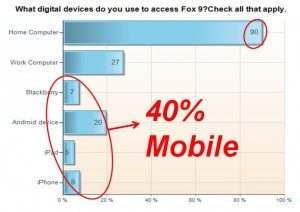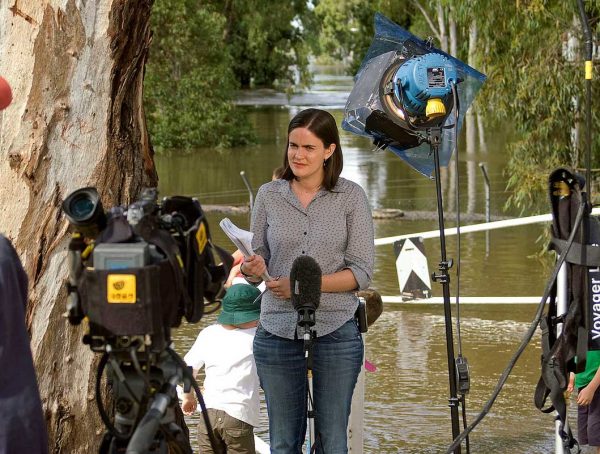by Tim Blotz
The Associated Press alert that chimed on my newsroom computer a few years ago was short and direct. “Bulletin: Jeane Kirkpatrick has died.” I leapt from my desk and shouted across the room to my 5 p.m. newscast producers, “Folks, we have to add an important story. Jeane Kirkpatrick is dead!” The silence was deafening.
Then came the puzzled, if not predictable reply shouted back. “Who’s Jeane Kirkpatrick?”
One of our senior investigative reporters sitting just a desk away burst out laughing and then buried his head in his hands in disgust at what he just heard. How can anyone in the news business, the very scribes of contemporary history, not know of the first woman U.S. ambassador to the United Nations?
I walked over to his desk and said, “Dude, we gotta cut her some slack, she wasn’t born yet when Reagan made Kirkpatrick a diplomatic rock star.”
That little newsroom narrative serves as a wonderful introduction to one of my favorite rites of fall, Beloit College’s Mindset List. Before school starts each September, Beloit Professor Tom McBride along with the college’s former Public Affairs Director Ron Nief trot out a list of social and experiential realities that have shaped the lives of incoming college freshmen. The list is meant to give educators insights into the mindset of their students so there can be more productive classroom learning and dialogue. The list is not only instructive for college professors, it’s also useful for businesses, advertisers, marketing executives, and yes, even news organizations.
Among the most useful insights from this year’s mindset list of our future customers are these:
1. There has always been an Internet ramp onto the information highway.
9. “Don’t touch that dial!” …what dial?
12. Amazon has never been just a river in South America.
30. Dial-up is soooooo last century.
37. Music has always been available via free downloads.
63. They won’t go near a retailer that lacks a website.
The takeaways? They’re connected, mobile, and consume on their schedule, not the schedule we make for them.
 Those very insights mirror portions of my own research on viewers of Fox 9 News in Minneapolis, Minn. In a survey of 1116 viewers, 42 percent indicate they use the internet to access Fox 9 News content at least three to five days a week. Twenty-two percent visit Fox 9 online every day. Even more significant, 40 percent of Fox 9’s online audience indicates they access the station’s news content through a mobile device.
Those very insights mirror portions of my own research on viewers of Fox 9 News in Minneapolis, Minn. In a survey of 1116 viewers, 42 percent indicate they use the internet to access Fox 9 News content at least three to five days a week. Twenty-two percent visit Fox 9 online every day. Even more significant, 40 percent of Fox 9’s online audience indicates they access the station’s news content through a mobile device.
The implications for news organizations and businesses alike could not be more clear. Our customers are changing and so are their mindsets. This year’s entering class of 2015 is symbolic of the new generation of emerging consumers. They no longer shop exclusively at stores with shelves and they will not wait until 9 p.m. to watch the latest news—especially from a traditional TV set. Those of us in legacy industries trying to reach our customers through traditional platforms and channels are in peril of becoming irrelevant in our own mindset.
Yes, today’s next generation of consumers may not know who Jeane Kirkpatrick was, but they know how to find out on their smartphones. The question is, will we be there to tell them?









1 Comment
True, the internet and all of it’s branches isn’t “The Hoola Hoop of the 90’s”…and it does allow “mobile consumers” access. But does the limit of space on such conduits as Facebook and Twitter provide enough of a news story to inform a consumer…and further more does it “drive” the consumer to the full story on the air, or at least on the website? Please remember these efforts also must “make money” and the last time I checked the “money” was in commercials, mostly on air and, to some degree, on the websites.
After all..there is the thought that ‘news’ is just a way to separate commercials 🙂